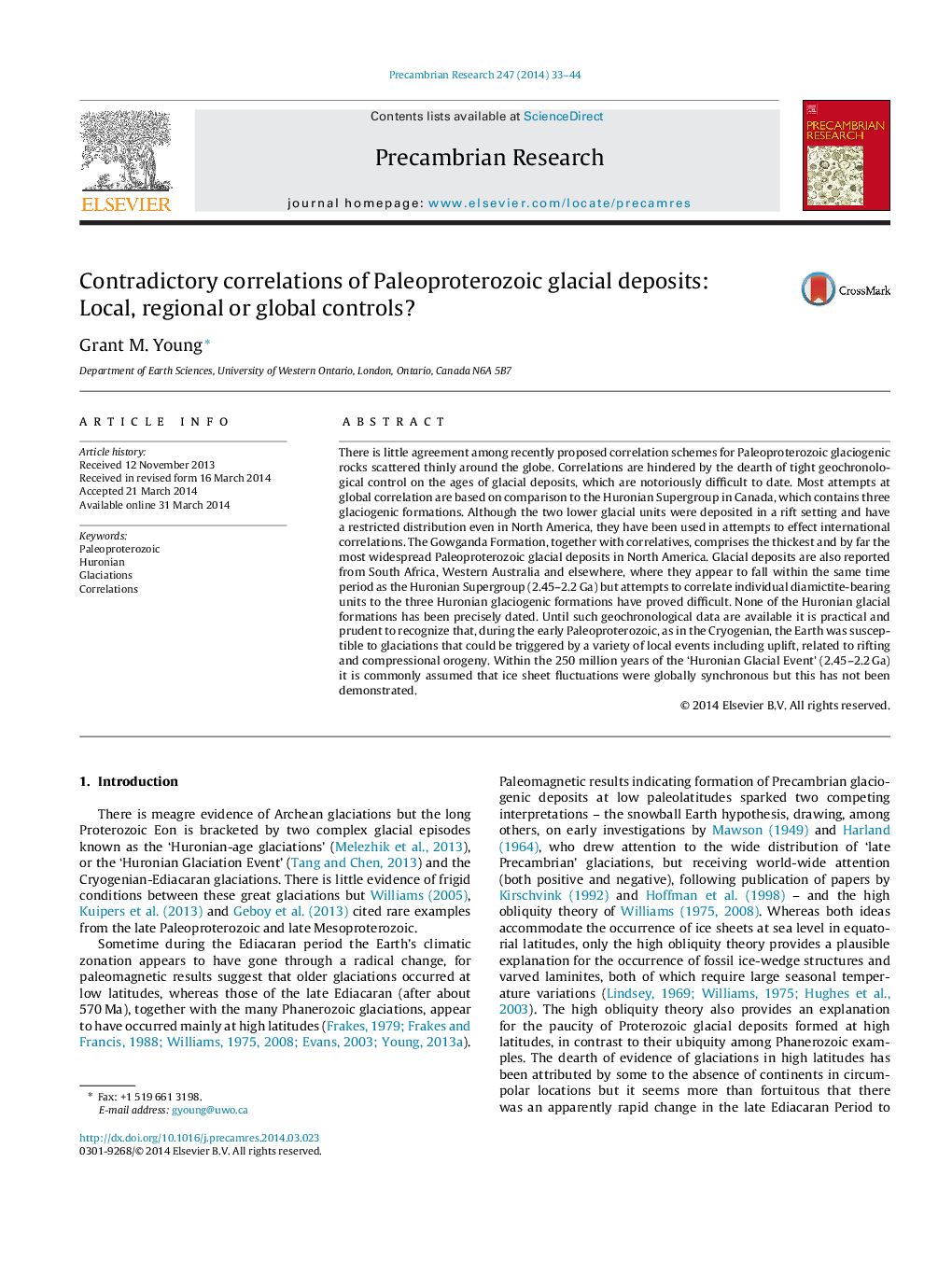| Article ID | Journal | Published Year | Pages | File Type |
|---|---|---|---|---|
| 4723093 | Precambrian Research | 2014 | 12 Pages |
•Correlation schemes for Paleoproterozoic glacial deposits are contradictory and uncertain.•Most have used three glaciogenic formations in the Huronian Supergroup as a template.•The two older Huronian glaciogenic units are local deposits, formed in a rift basin.•Only the Gowganda Formation (post break-up) has regional correlatives within North America.•The Gowganda is the best (only?) candidate for global correlation of Paleoproterozoic glacial deposits.
There is little agreement among recently proposed correlation schemes for Paleoproterozoic glaciogenic rocks scattered thinly around the globe. Correlations are hindered by the dearth of tight geochronological control on the ages of glacial deposits, which are notoriously difficult to date. Most attempts at global correlation are based on comparison to the Huronian Supergroup in Canada, which contains three glaciogenic formations. Although the two lower glacial units were deposited in a rift setting and have a restricted distribution even in North America, they have been used in attempts to effect international correlations. The Gowganda Formation, together with correlatives, comprises the thickest and by far the most widespread Paleoproterozoic glacial deposits in North America. Glacial deposits are also reported from South Africa, Western Australia and elsewhere, where they appear to fall within the same time period as the Huronian Supergroup (2.45–2.2 Ga) but attempts to correlate individual diamictite-bearing units to the three Huronian glaciogenic formations have proved difficult. None of the Huronian glacial formations has been precisely dated. Until such geochronological data are available it is practical and prudent to recognize that, during the early Paleoproterozoic, as in the Cryogenian, the Earth was susceptible to glaciations that could be triggered by a variety of local events including uplift, related to rifting and compressional orogeny. Within the 250 million years of the ‘Huronian Glacial Event’ (2.45–2.2 Ga) it is commonly assumed that ice sheet fluctuations were globally synchronous but this has not been demonstrated.
